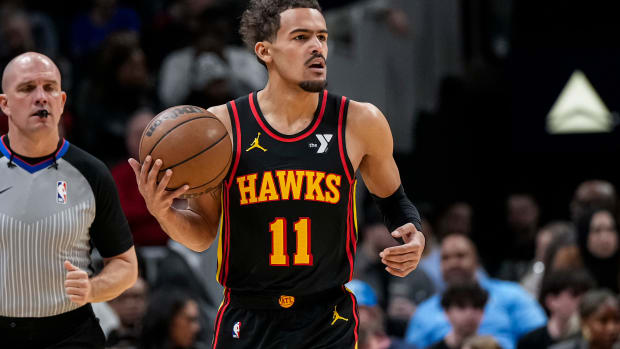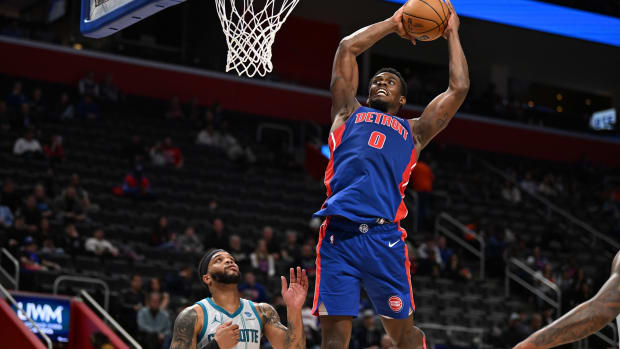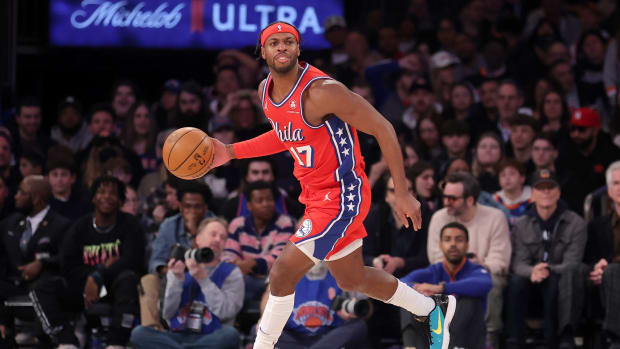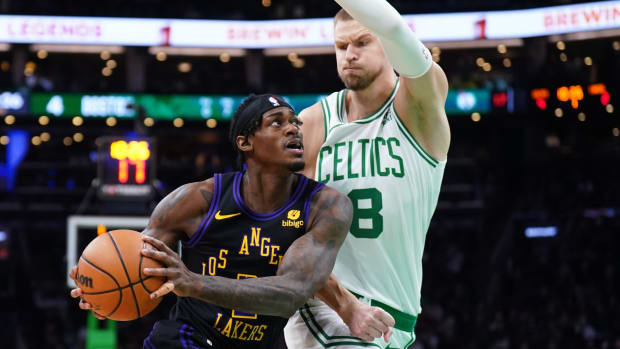Adam Silver: NBA Won’t Cling to ‘Tradition’ as It Evaluates Postseason Changes
LOS ANGELES — Is the NBA’s longstanding “East versus West” postseason format headed to its death?
Commissioner Adam Silver told reporters during his annual All-Star speech on Saturday that the NBA continues to give “serious attention” to the relative merits of its two-conference playoff format, which includes eight teams each from the Western and Eastern Conferences, and a potential new format that would include the best 16 teams, regardless of conference.
While Silver made clear that no action is imminent, he specifically stated that the NBA would not blindly adhere to its postseason format solely for the sake of history.
“When we get to the playoffs, should we be taking the best 16 teams?” Silver asked. “Or, even if we go eight from the West, eight from the East, [should we re-seed] 1 through 16 going into the playoffs? … I think the obstacle is travel, not tradition.”
'We Will Definitely Not Shut Up and Dribble:' LeBron and Adam Silver Speak Out
The NBA has played a championship series between an East winner and a West winner every year since 1950, so re-seeding the 16 playoff teams or simply picking the top 16 teams regardless of conference would represent a monumental change. However, the NBA made a similar alteration to its All-Star Game format this year, with Sunday’s game featuring two teams selected by captains LeBron James and Stephen Curry rather than by strictly conference representatives, the previous method since 1951.
When the NBA unveiled its new All-Star format in the fall, many wondered whether it was a test-drive for a revamped postseason format. After all, the Western Conference has consistently outperformed the Eastern Conference for nearly two decades and the 2018 playoffs generated less-than-expected revenue due to numerous one-sided series filled with double-digit victories. Why let something as arbitrary as geography stand in the way, especially when the game continues to grow its audience outside the United States?
This year, the Warriors and the Rockets are the NBA’s two best teams, and they are on track to meet in the Western Conference finals rather than in the Finals. And in the East, LeBron James could be headed for his eighth straight Finals trip, an amazing feat that has surely been aided along the way by the East’s weaker competition. Of course, in an ideal world of profit and ratings maximization, the league’s two best teams would always face off in the Finals.
“You would like to have a format where your two best teams are ultimately going to meet in the Finals,” Silver said. “I'm not saying this is the case this year, but you could have a situation where the top two teams in the league are meeting in the conference finals or somewhere else. We're going to continue to look at that.”
What’s the Next Step for the NBA’s Political Awakening?
After implementing a new spread-out schedule for 2017–18 that eliminated four-games-in-five-nights, cut down on back-to-backs, and moved up the season’s start date, Silver suggested that additional calendar tweaks could be necessary for the NBA to take the plunge on a new postseason format.
“We've added an extra week to the regular season and we've tried to reduce the number of back-to-backs,” Silver said. “We are concerned about teams crisscrossing the country in the first round, for example. We are just concerned about the overall travel that we would have in [a format with] the top 16 teams. Maybe, ultimately, you have to add even more days to the season to spread it out a little bit more to deal with the travel. Maybe air travel will get better. All things we'll keep looking at.”


































